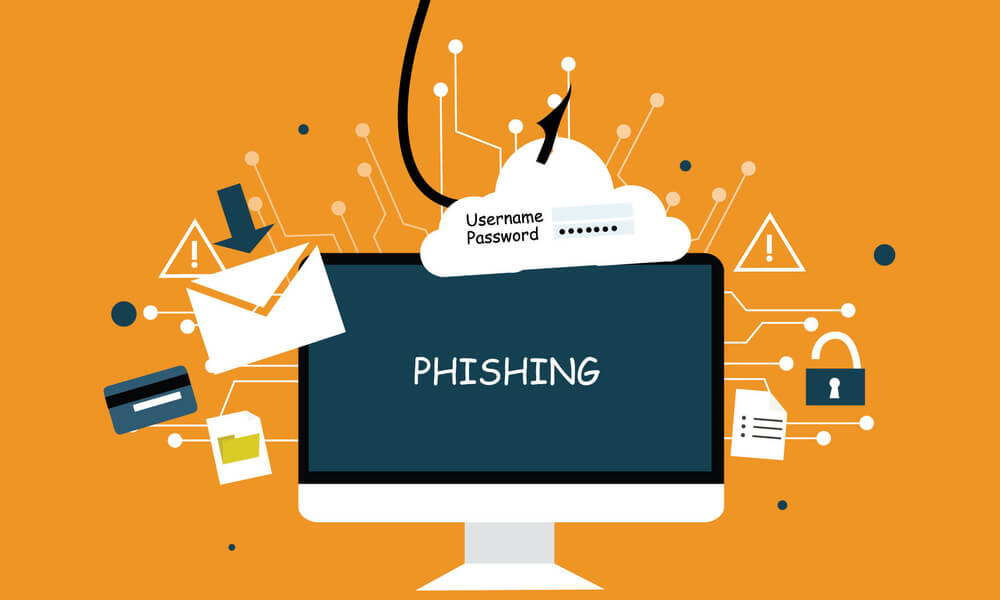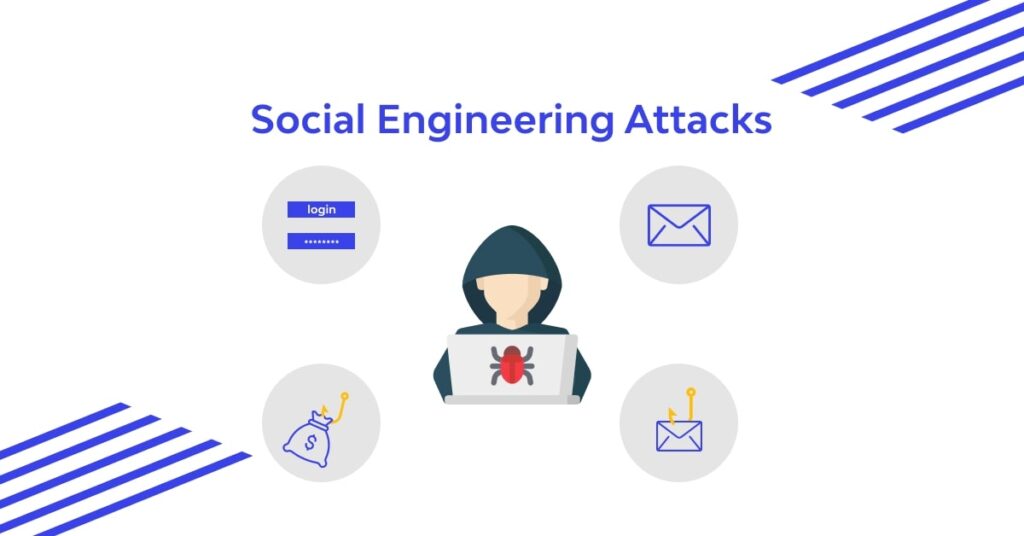The Most Common Cyber Security Threats and How to Avoid Them
Cyber security is now more important than ever to ensure that our personal and organizational information is secure from malicious hackers and other IT security threats. In this blog post, we will be exploring some of the most common Cyber Security threats and providing tips on how to protect yourself from them. From phishing attacks to malware and ransomware, we will cover the essentials of keeping your data safe and secure.
Overview of Cyber Security Threats
As technology advances and more information is shared online, the risk of cyber security threats increases. Cyber security threats refer to any malicious activity or attack on a computer system, network, or electronic device. The importance of IT security and cyber security cannot be overstated, as the impact of cyber attacks can be severe, from data breaches and identity theft to financial loss and damage to a company’s reputation. To combat these threats, it is essential to stay up to date on threat intelligence and implement effective security measures. In this blog post, we will discuss the most common cyber security threats and provide tips for avoiding them.

Malware
One of the most common cyber security threats is malware, short for malicious software. This type of software is designed to infiltrate computer systems without the user’s consent, with the goal of causing damage or stealing sensitive information.
There are many types of malware, including viruses, Trojan horses, worms, and ransomware. Once a computer is infected with malware, it can spread to other systems through emails, file sharing, or downloads.
To protect against malware, it’s important to have up-to-date IT security measures in place, such as firewalls and antivirus software. Additionally, regular system updates can help patch any vulnerabilities that hackers may exploit.

It’s also important to exercise caution when browsing the internet or opening emails, as many malware infections begin with a phishing attack. These attacks attempt to trick users into clicking on a link or downloading a file that contains the malware.
In summary, malware is one of the biggest cyber security threats facing individuals and businesses today. By staying vigilant and taking steps to protect against these threats, we can help safeguard our valuable data and IT security.
Phishing Attacks
One of the most common types of cyber criminal’s cyber security threats is phishing attacks. Phishing attacks occur when cybercriminals send fraudulent emails, text messages, or instant messages to trick people into sharing sensitive information, such as passwords, bank account details, and social security numbers. These cyber criminals often use realistic-looking logos and websites to fool people into thinking they are communicating with a trusted organization.
Phishing attacks are so successful because they prey on human psychology. People are often inclined to trust emails and messages that appear to be legitimate. Cybercriminals take advantage of this trust and use various tactics to deceive people into divulging sensitive information.
To avoid phishing attacks, it is essential to be aware of the signs of a potential attack. Emails and messages that contain unusual requests, grammar and spelling errors, or messages that seem too good to be true should be avoided.

In addition, it is important to have strong IT security in place, including anti-phishing software and threat intelligence solutions that can detect and prevent phishing attempts.
Overall, cyber security threats, such as phishing attacks, are becoming increasingly sophisticated and dangerous. Staying informed about the latest threats and taking proactive measures to protect yourself is essential in today’s digital landscape. By implementing strong Cyber Security practices and being aware of potential threats, you can significantly reduce the risk of falling victim to a cyber attack.
Password Attacks
Another common type of cyber security threat is password attacks. This involves a cybercriminal trying to guess or obtain your password to gain access to your personal or sensitive information.
There are a few different types of password attacks, including brute force attacks, dictionary attacks, and phishing attacks. Brute force attacks involve using software to guess a password by trying different combinations of letters, numbers, and symbols until the correct one is found. Dictionary attacks are similar, but they use a pre-generated list of commonly used passwords instead of randomly generating them. Phishing attacks involve tricking the user into revealing their password through fake login pages or emails that appear to be from a legitimate source.
The best way to protect yourself from password attacks is to choose strong and unique passwords for each account, use two-factor authentication. Whenever possible, and be cautious when entering your password on any website or device. Additionally, it is important to regularly update and change your passwords to ensure they remain secure.

It is also helpful to use a password manager, which can generate strong passwords for you and store them securely. These tools can also alert you if any of your passwords have been compromised in a data breach.
Overall, password attacks are a significant threat to your IT security and personal information. By taking proactive measures and being cautious online, you can reduce your risk of falling victim to these cyber security threats.
Social Engineering Attacks
Social engineering attacks are threats that exploit human psychology and emotions to gain access to sensitive information or systems. The attacker often impersonates a trustworthy entity, such as a co-worker or a legitimate organization. It then convinces the victim to share confidential data or perform an action that compromises IT security.
There are many types of social engineering attacks, including pretexting, baiting, quid pro quo, and tailgating, among others. In a pretexting attack, for example, the attacker poses as someone in authority and asks the victim to divulge confidential information. In a baiting attack, the attacker offers a desirable item, such as a free software or a gift card, in exchange for sensitive information.

Social engineering attacks can be difficult to detect, as they often rely on the victim’s trust and willingness to comply with the attacker’s requests. However, with the help of threat intelligence and effective IT security measures, organizations can minimize the risks of social engineering attacks.
To prevent social engineering attacks, it is important to educate employees about the tactics used by attackers and to implement strict security protocols for sharing confidential information. In addition, IT security measures such as firewalls, anti-virus software, and intrusion detection systems can help identify and prevent social engineering attacks before they cause damage.
Denial of Service (DoS) Attacks
Another type of cyber security threat that is prevalent today is the Denial of Service (DoS) attack. In this type of attack, hackers overload a network, website, or server with traffic, causing it to shut down or become inaccessible. The goal of the attackers is to prevent legitimate users from accessing the system or service, causing damage or loss of revenue.
DoS attacks are particularly concerning for businesses, as they can disrupt operations and cause significant financial losses. It’s important to note that DoS attacks are not just carried out by individuals, but can also be orchestrated by large-scale botnets or other malicious groups.
To protect against DoS attacks, organizations need to employ threat intelligence and IT security strategies that can help identify and mitigate potential threats. This can include implementing firewalls, intrusion detection and prevention systems, and other security measures to monitor network traffic and detect abnormal behavior.
Additionally, businesses must have an incident response plan in place to respond to a DoS attack if it occurs. This could include working with cyber security experts to quickly resolve the issue and restore normal operations.
In summary, Denial of Service (DoS) attacks are a serious cyber security threat that can cause significant damage to businesses. Organizations need to have effective security measures in place to prevent and respond to such attacks. With the right strategies and precautions, businesses can protect themselves against these and other cyber security threats.
Ransomware Attacks
Ransomware attacks have become a significant concern for individuals and businesses alike in recent years. It is a type of malware that encrypts the victim’s files and demands payment in exchange for the decryption key.
It is typically carried out through phishing emails, malicious attachments, or by exploiting vulnerabilities in outdated software. Hackers have been using more sophisticated tactics, making it increasingly challenging for security methods to detect and prevent these attacks.
To combat ransomware attacks, threat intelligence and a robust cyber security plan are crucial. To have proper security measures such as using strong passwords and multi-factor authentication, keeping software up to date, and regularly backing up data.

In the event of a ransomware attack, it’s essential to isolate infected systems to prevent the spread of the infection. This can be achieved by disconnecting devices from the network or shutting down infected machines entirely. After that, it’s recommended to contact law enforcement and a trusted IT security provider to help you recover your data and mitigate the damage caused by the attack.
Ultimately, it’s crucial to remain vigilant and take proactive measures to prevent ransomware attacks. This includes being cautious when opening emails from unknown sources. Also regularly educating employees on the dangers of clicking on suspicious links or downloading attachments. With the right security measures in awareness, it’s possible to reduce the risk of falling victim to these common cyber security threats.
Tips for Avoiding Cyber Security Threats
Cyber threats that businesses and individuals face every day, it’s essential to be proactive and take steps to protect yourself. Here are some tips to help you avoid becoming a victim of cyber attacks:
1. Keep Your Software Up to Date:
It’s critical to keep your IT security software updated to ensure that your devices are protected against new threats. Software updates often include security patches and bug fixe that can help keep your system safe from potential threats.
2. Use Strong Passwords:
Using strong passwords for all your accounts is a simple yet effective way to protect yourself from cyber-attacks. Make sure your passwords are long, complex, and unique for each account.
3. Educate yourself and your Team:
Educating yourself and your team on cyber security threats and best practices can avoid potential attacks. Understanding the latest threat intelligence and staying informed about new tactics can help you stay one step ahead of cybercriminals.
4. Implement Multi-Factor Authentication:
Authentication adds an extra layer of security to provide more forms of identification before granting access to an account. This makes it more difficult for hackers to access your data even if they have your login credentials.
5. Backup your data:
Regularly backing up your data is crucial in case of a ransomware attack or other types of data breach. This ensures that you won’t lose critical information if your system is compromised.
